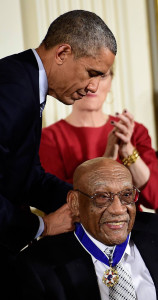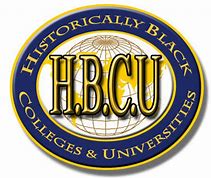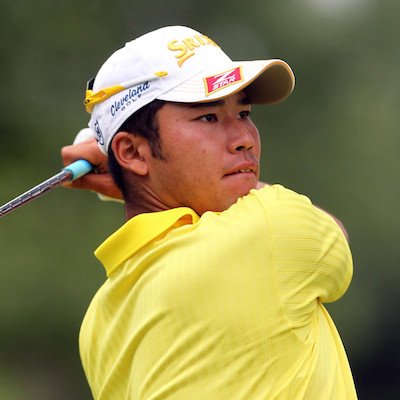
Much has occurred in the golf industry over the past few years, we are witnessing a change of the guard by the presence of young guns represented by the play of Jordan Spieth, Rory McElroy, Jason Day and list goes on forever. Many of them have resulted in major impacts on the industry and individual lives. The editors of Minority Golf Magazine will publish a series of articles in the coming weeks reflecting on the above-mentioned stories and importantly, there will be a reflection on the golfing greats who have passed on recently. Their legacies remain and their impact on our sport should serve as a reminder of how fortunate we are to have known them.
At the head of the class was Charles “Charlie” Sifford.
By Herschel Caldwell
When I was growing up in Cincinnati, Ohio in the late 50’s and early 60’s, Black golfers were relegated to playing at the few public courses available to them: Sharon Woods, Winton Woods, the Lunken Airport driving range and the regional “hub” of Black golf, Avon Field. While Avon was not very long or challenging compared to many of the newer public courses, it served as a magnet for some of the best Black players in the country, including Curtis Sifford, Jim and Chuck Thorpe, Ted Rhodes, James Black and Pete Brown. Many other great Black professionals, like Jimmy Woods, were well-qualified but never had a chance to play on the PGA tour. Young, minority players of the time could only marvel at the wealth of golf talent that graced these fairways in Cincinnati, and–by virtue of the “money” games–other local and regional courses such as Coffin in Indianapolis, Indiana, and Madden in Dayton, Ohio.
Blacks also had their own professional golf organization, the United Golfers Association (UGA). Dating back to 1938, the UGA sponsored and held golf tournaments on what was affectionately called the “Chit’lin’ Circuit.” There, minority players like Rhodes, Brown, Charlie Sifford, the Thorpes, Lee Trevino, ChiChi Rodriquez, Calvin Peete, Lee Elder (the first Black golfer invited to play in the Masters) and countless others, honed their skills. Right about this time the faces and talent of minorities began to surface in other realms of golf, including on the prestigious PGA Tour. Many more changes have occurred in the golf industry over the past few years, most of which have majorly impacted the industry as a whole, as well as the lives of individual players.
Many of the minority golf players mentioned in this article did not live to enjoy the hard-fought victories brought about by integration and assimilation in the golf industry. In the coming weeks, the editors of Minority Golf Magazine will publish a series of articles reflecting on the minority Legends of golf, with particular emphasis on those golfing greats who have recently passed on. Their legacies remain and their impact on our sport should serve as a reminder of how fortunate we are to have had them as role models. Let’s review a couple of them now:

Born in 1923, and in his sixties during the late 50’s-early-60’s, Sifford’s supreme level of play enabled him to be a regular on the PGA Tour. I declared my professional senior status 25 years ago, and as a result was privileged to play practice rounds and even compete with and against Sifford. As a young lad, I had already teed-up with many of the better “money” players of the day: “Dead Straight,” “Tater Pie,” Hank Moore and Willie “Dancing Man” Kellum. That said, I thought I had a pretty good game. However, Charlie was not impressed. In fact, he was rarely impressed with anyone–including “Jack,” “Arnie,” “Sam” and “Ben.” They had country club credentials. He had hard knocks.
When not playing a PGA Senior event, Sifford could be seen teeing it up at the local Black tournament events on the ‘Circuit. He was never out of touch with the common man, and he was always ready to spend time with young minority professionals who sought his mentorship and down-to-earth advice. “Nobody gon’ give you a ‘G-damn’ thing,” quipped Charlie. “If they let you play, you gotta prove you can.” As for player qualifications, said Sifford, “If you can’t get the ball in the hole in less strokes than the next guy, you better find something else to do.”*
Despite the institutional and personal hurdles of racism on the tour, Charlie–like Jackie Robinson, Joe Louis, Jack Johnson, Jesse Owens, Arthur Ashe, Althea Gibson and most other Black sports legends–never wavered in his quest for superb play, leadership and devotion to his game. It is on Charlie’s broad shoulders that many after him stand and will continue in the shadow of his legacy. Golf was his life and America was his home–both of which are better because of him. Hit ‘em Charlie, you are now in a place where the fairways are even and the greens are always true. Moreover, they will let you play!


